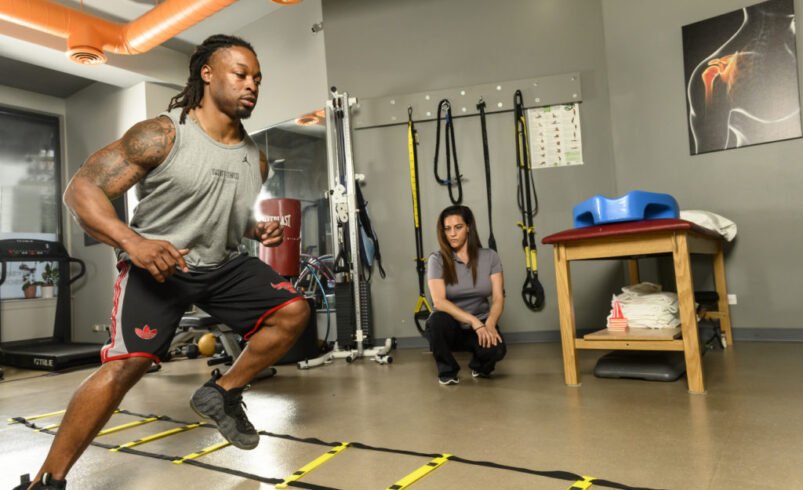Why You Need Physical Therapy After a Sports Injury

In spite of the fact that it has a certain level of risk, being involved in sports and physical activities has numerous benefits to one’s physical as well as mental well-being. Regardless of whether you are an elite athlete pushing your body to its limits or just a weekend warrior taking part in recreational activities, getting injured can be a big blow to your fitness journey. Accordingly, if you have experienced sports injuries recently around the San Ramon area, consider contacting the seasoned therapists at Ironhorse Physical Therapy & Pilates for consultation on how you could personally be assisted through this kind of rehabilitation process.
The Importance of Proper Rehabilitation
Sports injuries have a wide range of problems that can affect tears, sprains, strains, fractures, and other forms of tearing or breaking muscles, tendons, ligaments, or joints. They often cause pain, swelling, limited mobility, and disabilities. When not rehabilitated correctly, these may result in long-term troubles such as chronic aches, instability, loss of motion range, and increased chances of re-injury. To resolve these problems properly, San Ramon Physical Therapy is needed to ensure the best healing process for the body, thus enabling restoration of function and improvement in overall body mechanics.
Reducing Pain and Inflammation
To start with, the first thing that should be done in the recovery process is to reduce pain and inflammation to provide a healing environment. In an injured area, therapists may use cryotherapy (ice packs or ice baths), for instance, which will constrict blood vessels and thereby reduce swelling.
On the other hand, they can use therapeutic ultrasound, through which a strong heating effect on soft tissues is achieved by using high-frequency sound waves to increase blood flow and facilitate the healing process. Likewise, electric stimulation can help interfere with pain impulses and assist in contracting or relaxing muscles, leading to inflammation reduction and lessening muscle spasms.
During this stage, manual techniques such as soft tissue mobilization, myofascial release, and joint mobilizations can also be crucial. Soft tissue mobilization includes applying focused pressure along with stretching on muscles, tendons, and fascia so as to break up scar tissue and adhesions, leading to tension reduction and enhancing flexibility.
Myofascial release targets fascia, a connective tissue that encompasses and supports muscles, among others. Applying sustained pressure or stretching into the area releases restrictions of fascia, including adhesions.
Restoring Strength and Flexibility
The rehabilitation program is always keen on the healing process and reduction of swelling so that the injured area can regain power and stretchability. Using resistance bands, weights, or one’s own weight, the practitioners recommend muscle strength-rebuilding exercises in the injured region and surrounding muscle groups to support or stabilize it properly.
Stretching, as well as other flexibility exercises, are important components of this program because they play a significant role in restoring movement range and averting future injuries. Flexibility and muscular performance may be improved by techniques referred to as proprioceptive neuromuscular facilitation (PNF) stretching, which combines active passive stretches with isometric contractions.
Improving Balance and Proprioception
Various sports injuries, notably those of the lower limbs and spine, may hamper balance and proprioception (the capacity to feel the position of the body in space). Physical therapists use tools such as BOSU balls, wobble boards, and foam pads when doing exercises that put their patients’ stability and coordination to the test. In addition to enhancing equilibrium, these workouts also retrain the proprioceptive system— a must for injury prevention as well as optimal athletic performance.
Engaging in proprioceptive exercises like single-leg stands with eyes open or closed can also help to re-educate body position sense and enhance neuromuscular control. Other examples are dynamic balance activities where athletes perform catching or throwing drills or agility training, which is able to imitate real-life sports scenarios before people move on to desired activity levels.
Correcting Biomechanical Imbalances
The development of sports injuries or hindering the recovery process may be associated with improper biomechanics, such as incorrect posture, poor muscle balance, and abnormal patterns of motion. Thorough evaluations by physical therapists identify these imbalances and recommend both exercises to correct them, adjust postures, or teach proper techniques.
Conclusion
Sports Injuries Treatment in San Ramon, CA, is a fundamental part of the recovery process after being injured in sports, although it can be highly challenging and frustrating. There will be a personalized rehabilitation program to lessen pain and strengthen and restore mobility, all of which are aimed at getting you back to your ideal activity level when you work with experienced physiotherapists from Ironhorse Physical Therapy & Pilates in San Ramon, San Ramon, CA.
In order to bounce back from your injury and continue chasing your dreams as an athlete, you should consider adopting an inclusive plan that addresses areas such as inflammation control and biomechanical changes. Hence, put physical therapy beyond everything else if you are not willing to compromise on getting into shape again and journey towards full recovery under professional guidance.




